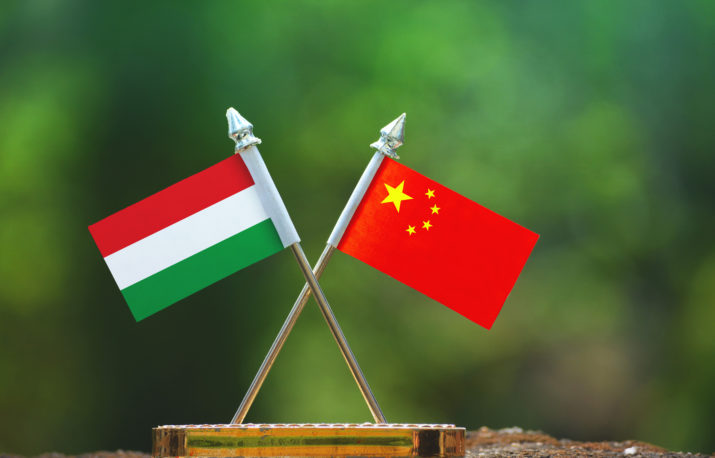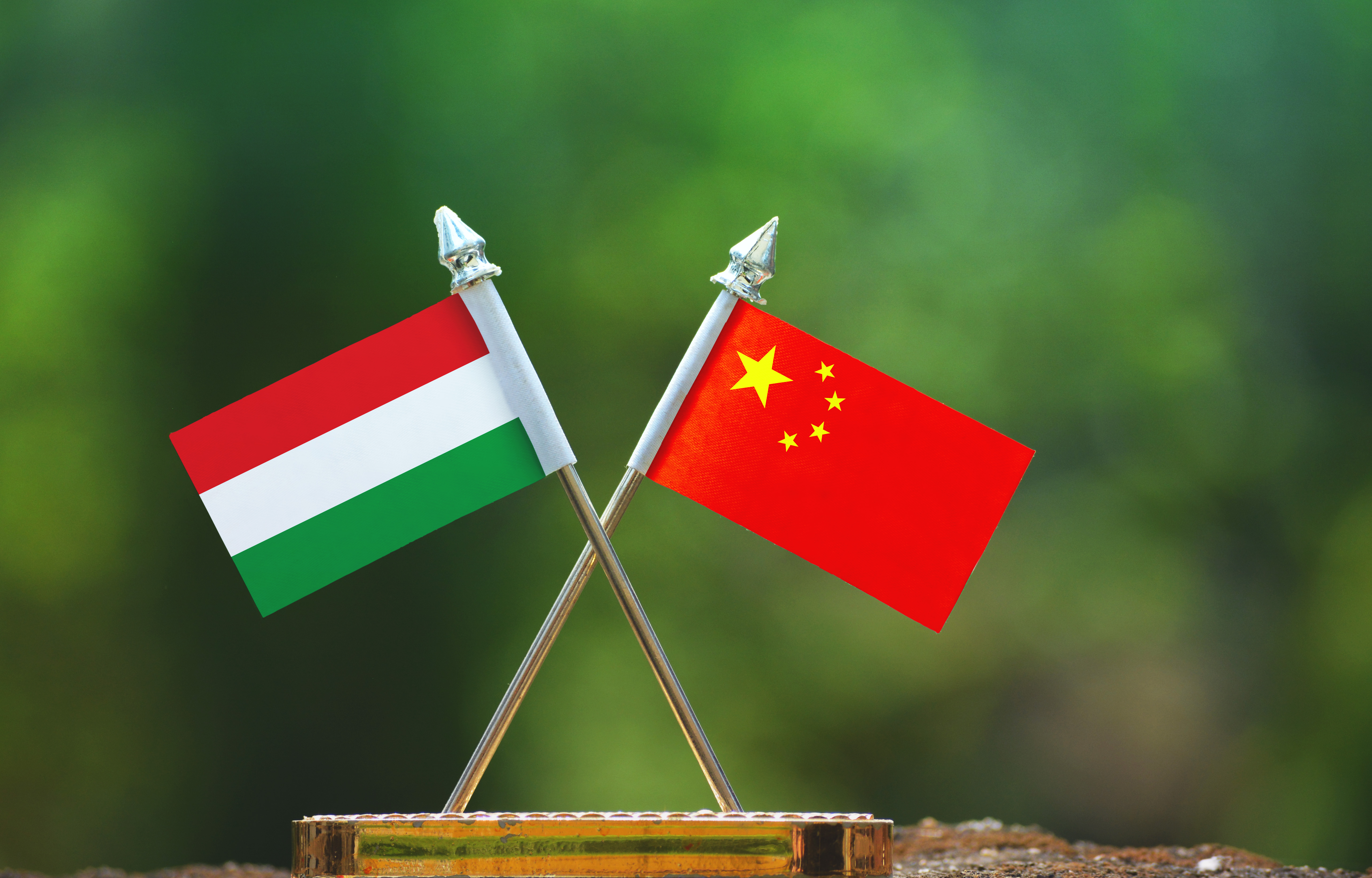

This is part of our special feature on Europe-China Relations.
In July 2018, Bulgaria, fresh off the back of its EU Presidency, will host the seventh annual summit for “Cooperation between China and Central and Eastern European Countries.” More commonly known 16+1 Initiative, it is a diplomatic platform coordinated by China, to support institutional coordination of relations between China and sixteen countries from the Central and East European (CEE) region. The sixteen countries include eleven EU member states (Estonia, Latvia, Lithuania, Poland, Czech Republic, Slovakia, Hungary, Romania, Bulgaria, Croatia and Slovenia) and five aspiring EU member states from the Western Balkans (Serbia, Bosnia and Herzegovina, Montenegro, Albania and Macedonia).
Since its first formal summit in Warsaw in 2012, suspicions about the nature and purpose of the platform have encouraged consistent criticism from political commentators. They argue it is a crude mechanism for China to obtain influence within the EU, to divide and weaken the Union, reinforce bilateral ties at national member state level, and hinder a common EU position on relations with China (see Grieger 2017). These criticisms have also been made in advance of the Sofia summit, with the Financial Times reporting in May 2018 of “the dismay of EU diplomats who fear the 16+1 could become a Trojan horse for China to shatter the bloc’s unity in sensitive areas ranging from the single market to foreign investment vetting” (Peel 2018). This criticism was the same story that the newspaper had published in advance of the 2017 Budapest summit (Spisak 2017; Kynge and Peel 2017), and follows on from countless other media and academic examples of the 16+1 initiative being described as a possible Trojan horse (see Turcsányi 2014; Eszterhai 2017; MacDowall 2018). This commentary argues that the regularity of the 16+1 Trojan horse criticism suggests that the platform and its members have failed to adequately explain its purpose to the outside audience in the west. It further argues that it also potentially shines a spotlight on the EU’s own failures to live up to the expectations of its newest members and reflects a sense of insecurity about CEE engagement in sub-regional activity.
China and CEE: Background
Relations between China and CEE have existed in some form since 1949 and were based on the shared experience of being communist countries. With the collapse of communism in 1989, the CEE region embraced the “Return to Europe” idea and turned away from Russia, the former Soviet space and those countries where communism remained, including China. Instead, they focused their foreign and economic policy energies towards integration with western Europe.
The EU’s eastern enlargement process happened in parallel with the renewal of its own relationship with China. EU membership offered CEE countries two key opportunities in relation to China. Firstly, EU accession concluded the European integration process and this allowed the CEE countries to re-evaluate their foreign policies and establish new goals, including re-establishing links with China. Secondly, EU membership provided new opportunities for the CEE countries to engage with China by virtue of their inclusion in EU-China strategic programs such as the 2003 EU-China Comprehensive Strategic Partnership. An example of this was the visit to Hungary by Chinese President Hu Jintao in June 2004, which saw both countries, within the framework of EU-China relations, sign a Joint Statement on “Friendly Partnership of Cooperation” (Hungarian Government n.d.). Furthermore, following the 2008 Global Financial Crisis, which hit many CEE countries hard, China became a highly attractive focus for new economic opportunities including inward foreign direct investment (FDI).
Hungary and China
The CEE eastern pivot was championed by Hungary, which has become a leading player in the region’s engagement with China. Hungary recognized that political expediency and social ties could be leveraged to advantage economic growth and investment from China. Hungary has the largest settled Chinese population in the region, stemming from the late 1980s, when it offered visa-free travel to Chinese citizens in advance of the 1989 Sino-Hungarian Summit. At that time, around 45,000 Chinese arrived into Hungary with around 25,000 settling mainly in Budapest. By 2013, this population had fallen to around 10,000 due to visa policy changes in 1991 and 2002. However, it remained the largest concentration of Chinese in CEE and, by far, the largest non-historic minority group in Hungary. The Hungarian government (including administrations from both the left and the right), based on the country’s own longstanding interest in minorities policy, has been working with the Chinese government to support this population and grow awareness of Chinese-Hungarian links from the mid-2000s (Kałan 2014). A Hungarian-Chinese bilingual school opened in Budapest in September 2004 and remains the only such school of its type in the region. This followed the 2003 opening of CEE’s first major Asian focused shopping complex, AsiaCenter, which offers China and other Asian countries permanent showrooms, office space and warehouses for their exports.
Since 2013, the Chinese population in Hungary has grown to around 19,000 due to a Hungarian Residency Bond Scheme targeting China. This scheme, which ended in April 2017, and is formally known as the Hungarian Investment Immigration Program, allowed Chinese (but also Vietnamese) nationals to acquire permanent residency by investing in Special Hungarian Government Bonds that have a minimum maturity period of five years. The minimum investment was €250,000. One of the criticisms of the scheme has been its transparency because the Government-owned company that sold the bonds is registered in the Cayman Islands. Regardless of such criticism, the scheme has increased the Chinese population in Hungary, providing both countries with a social connection to justify their bilateral ties.
Fidesz, led by Viktor Orbán, won the 2010 Hungarian election. The new government made a major play of orientating Hungarian foreign policy eastward – what it termed its Eastern Opening (Keleti Nyitás). It was claimed that the policy change was, in part, a direct response to Hungary’s experiences during the Global Financial Crisis, when it had been forced to seek a $25 billion joint bailout from the International Monetary Fund (IMF), EU, and World Bank (IMF 2008). The Eastern Opening was intended to reduce Hungary’s economic dependency on the West (Molnár 2015) and encourage opportunities for economic growth via new trade links with Japan, South Korea, Southeast Asia, China, Russia, India, and Central Asia. China was identified as the primary partner, with Hungary selling itself as a “stable, longstanding, economic, financial and logistic foothold for China in Europe” (Tianping 2015). The policy recognised that China was fast becoming an important economic player within the world economy. Orbán noted the importance of this in 2010, when he commented, “We are sailing under a Western flag, though an Eastern wind is blowing in the world economy” (Matura 2018). Foreign Minister, Péter Szijártó (2017), has also commented that “The old model for globalisation, which was characterised by a flow of capital from West to East, has lost steam, and in the new model the background for providing economic impetus is in the East. Much of the world’s investable capital has accumulated in the East, in Asia, and strong far-eastern companies are gaining an increasing share of the market worldwide.” The attitude of the Hungarians is not that surprising, and they do not stand alone in Europe with regard to courting the Chinese, as west European countries have been just as focused on attracting Chinese inward investment and external trade opportunities. If anything, Hungary was merely responding to the fact that China had itself opened westward with its “Go Global Strategy,” and was actively seeking partners for outward FDI and export opportunities. The Hungarians have not been the only Central European countries to recognize the prospects China offered. Poland has its “Go China Strategy,” The Czech Republic has its “China Investment Forum” and Slovakia has recently launched a three year “(2017-2020) Strategy for Development of Economic Relations with China.”
There has been significant criticism levelled at Hungary’s Eastern Opening policy, mainly due to its failure to attract high levels of investment (Molnár 2015; Matura 2018) beyond the initial big purchase of Hungarian chemical company, Borsodchem, for $1.6 billion by the Wanhua Group in 2010. Indeed, nearly all greenfield investments, infrastructure investment, or acquisitions that had been agreed upon between Hungary and China in the years after 2010 have failed (Matura 2018b). Therefore, it was not surprising that the Hungarian government had quietly retired regular references to the Eastern Opening policy by 2015. Nonetheless, China remains a primary focus of attention for Hungary, and it continues to maintain its leading role within the region as the country with the highest value of trade exports to China (see table 1). Although at 2.2 percent of total export value, China pails into insignificance when compared with Hungary’s EU partners who received in excess of 80 percent its exports in 2016 (see table 2). It is this disparity between China and the EU, not only in the Hungarian case but across the other fifteen CEE countries too, that have led commentators to question the rationale for why the CEE countries have been so keen to engage with China. Essentially, interests between the CEE countries and China do not necessarily align and this has allowed for the emergence of more critical literature on the development of China-CEE relations. This misalignment and disparity is used as justification for criticism of the 16+1 by claiming it diverts the attention of the regions’ capitals away from their natural and significantly more important partner – the EU. Of course, for the CEE countries, the attention they receive from China is appealing because it provides them a platform to engage on the international stage separate from the more high-profile west European EU members. For example, Hungary’s focus on China raises its profile on the global stage in ways that its relationship with its biggest trade partner, Germany, cannot do. Therefore, it is assumed that politics must be at play in explaining why the CEE countries are so fixated with China.
China’s Interest in CEE
If politics is important for understanding the CEE interest in China, then it is not surprising that politics should inform questions about why China is so interested in CEE. The individual low import and export ratios, compared with other EU member states, also suggests that there has to be more than economics driving China’s promotion of 16+1. However, when it comes to trade, China tends to view the region as a collective whole rather than from an individual country basis. In this context, the CEE region is comparable to any of the major west European states (bar Germany) in terms of imports of Chinese goods (see table 1). To understand China’s apparent interest in the CEE region, we must therefore view any explanation within two main contexts. The first is Chinese soft diplomacy and trade objectives, specifically the Belt and Road Initiative (BRI), and the second is wider China-EU relations.
The BRI, launched in 2013, is a series of land and maritime routes that radiate from China towards Europe, Africa, and Indonesia. The BRI has five key purposes – (1) reduce transportation costs for Chinese goods, (2) provide new markets of sectors of the Chinese economy that have over capacity (namely the steel), (3) provide investment opportunities for the excess $3 trillion in foreign reserves held by China, (4) promote the Renminbi as a global reserve currency, and (5) boost local economies along the BRI to increase demand for Chinese goods.
Europe is the westerly endpoint of the BRI and serves as a major mature market for China. The CEE region is part of this market by virtue of the fact that the majority of countries are EU members. Of course, the volume of trade to the region is significantly less than that which goes collectively to Western Europe. However, if regional infrastructure and distribution networks can be improved, then there is significant scope to increase exports.
The 16+1 operates as a sub-regional diplomatic initiative, albeit one driven from the Chinese side. A permanent secretariat was established in Beijing within the Chinese Ministry of Foreign Affairs. This acts as a common point for cooperation and supervision of projects and organises meetings and summits. The fact that the sixteen CEE countries do not have a permanent representative within the secretariat may count as a weakness in terms of their ability to agenda set and highlight the fact that this may not be a true partnership. The CEE countries, however, may not wish to have a single representative because they do not operate within the 16+1 as a single collective. Each of the countries essentially competes to attract Chinese investment. An individual permanent representative for the bloc may not be regarded as impartial. Instead, the main forum for decision-making is at Heads of State level via the annual summit, which operates alongside specialist expert discussion and cooperation meetings. These expert forums were agreed at meetings in Bucharest (2013) and Belgrade (2014) and include, among others, the establishment of a Chamber of Commerce, a High-level Symposium of Think Tanks, a Young Political Leaders Forum, a forum for Education Policy Dialogue, a Tourism Promotion Agency (based in Budapest) and an Investment Promotion Agency (based in Warsaw and Beijing).
Is the 16+1 a Trojan horse for China?
The problem with answering this question is that currently we cannot be sure. China and the CEE countries would argue that it is not a Trojan horse, that it should be viewed as merely part of the BRI, that it fully recognizes its place within the context of the wider EU-China strategic partnership and operates in full accordance and transparency of the EU’s regulatory and China-relations frameworks. The Trojan horse description signifies the political and not the economic nature of the initiative. Limited academic research explores this; most published literature concentrates on trade and investment relations with little or no deep analysis of the political context.
Accusations about the 16+1 being a Chinese Trojan horse highlights that its members (including China) have failed to adequately explain how it fits into the EU’s roadmap for relations with China. Although the Commission and the Council are more open to the 16+1, there is still much trust building to be done to convince critics that China’s interests do not seek to undermine those of the EU’s. This will not be easy because realist interpretations of the situation will naturally lead to questions about the deeper purpose and strategic thinking that underpins the 16+1. One way that this might be done would be to open the 16+1 to observers, specifically the EU Commission. This would provide opportunity for greater transparency and go some way towards embedding the initiative within EU-China partnership structures.
Accusations about a Trojan horse also highlights that divisions between East and West Europe still exist in terms of how member states that joined in 2004 and after are viewed. Richard Turcsány (2014) is one of the few scholars to call the EU out on this. He has suggested that there is a danger that some countries could be marginalised due to “the application of double standards for different member states.” The CEE countries have just as much right to engage with China as any other EU member state. Whether intentional or not, such criticisms have the potential to reinforce a sense that the CEE states are not trustworthy or capable of promoting EU interests when engaging in external relations and that they are the weak link in maintaining a common EU voice. Furthermore, it also reinforces the idea that sub-regional partnership is not welcomed within the EU. We can also ask if there is a perceived sense of post-accession disappointment with what EU membership has provided CEE and if this has encouraged them to turn eastward.
It may well be that there is some truth to these criticisms, but equally it could be that they are exaggerated. In order to address this puzzle there needs to be further research into the political diplomacy of China-CEE relations and how this fits within the broader EU-China discourses.
The 16+1 is a unique mechanism for extending China-Europe relations. Gaining a greater understanding of the politics of how it operates will help either to eliminate much of the mistrust that currently exists towards it, or force it to restructure and adopt a more principled European approach of engagement and thus better integrate it into wider EU-China partnership cooperation. Failure to undertake such research will result in a continuation of the type of critical media stories that regularly appear in advance and after each of the annual summits and this will only fuel mistrust and division. In such a case, it could turn out to be the Europeans and not necessarily China that ultimately divide and weaken the EU.
Table 1: China-CEEC trade flows 2016 v Western Europe
| Country | % of Total Imports | Value of Imports from China / $ | % of Total Exports | Value of Exports to China / $ |
| Hungary | 5.3 | 4.87B | 2.2 | 2.25B |
| Poland | 13 | 23.4B | 0.97 | 1.91B |
| Romania | 5.1 | 3.82B | 1.1 | 682M |
| Albania | 8.8 | 410M | 3.1 | 60M |
| Bosnia & Herzegovina | 6.8 | 617M | 0.29 | 14.7M |
| Bulgaria | 4 | 1.15B | 1.9 | 481M |
| Croatia | 3 | 645M | 0.62 | 83.8M |
| Czech Republic | 13 | 17.8B | 1.2 | 1.9B |
| Estonia | 8.7 | 1.29B | 1.4 | 190M |
| Lithuania | 2.9 | 784M | 0.55 | 136M |
| Latvia | 3.3 | 444M | 1.1 | 130M |
| Macedonia | 6.3 | 421M | 1 | 47.8M |
| Moldova | 9.9 | 394M | 0.72 | 14.5M |
| Montenegro | 9 | 204M | 6.5 | 20.9M |
| Serbia | 8.4 | 1.6B | 0.17 | 25.3M |
| Slovakia | 9.4 | 6.34B | 1.6 | 1.2B |
| 16 CEECs | 61.25B | 9.15B | ||
| 11 CEE EU members | 60.54 | 8.96B | ||
| Germany | 10 | 105B | 6.4 | 85.4B |
| United Kingdom | 9.5 | 59.6B | 4.5 | 18.1B |
| France | 9.4 | 51B | 3.6 | 17.7B |
| Italy | 7.5 | 30.2B | 2.7 | 12.3B |
Source: OEC (2018)
Table 2: Where does Hungary export to?
| Country of Export | Total Export Value / $ | % of Export value | ||
| 2010 | 2016 | 2010 | 2016 | |
| Total Export | 87.6B | 103B | 100 | 100 |
| Germany | 21B | 28.4B | 24 | 28 |
| Romania | 5.11B | 5.14B | 5.8 | 5 |
| Slovakia | 3.5B | 5.07B | 4 | 4.9 |
| Austria | 4.11B | 4.98B | 4.7 | 4.8 |
| France | 4.39B | 4.92B | 5 | 4.8 |
| Italy | 4.82B | 4.91B | 5.5 | 4.8 |
| Czech Republic | 2.75B | 4.27B | 3.1 | 4.3 |
| Poland | 3.16B | 4.2B | 3.6 | 4.1 |
| United Kingdom | 5.05B | 4.03B | 5.8 | 3.9 |
| USA | 2.27B | 3.55B | 2.6 | 3.5 |
| Netherlands | 2.8B | 3.25B | 3.2 | 3.2 |
| Spain | 2.54B | 3.18B | 2.9 | 3.1 |
| China | 1.76B | 2.25B | 2 | 2.2 |
| Belgium/Luxembourg | 1.59B | 1.98B | 1.8 | 1.91 |
| Russia | 3.31B | 1.6B | 3.8 | 1.6 |
| Croatia | 635M | 1.48B | 0.73 | 1.4 |
| Sweden | 1B | 1.27B | 1.1 | 1.2 |
| Bulgaria | 777M | 1.08B | 0.89 | 1.1 |
| Slovenia | 772M | 1.06B | 0.88 | 1 |
| Denmark | 597M | 683M | 0.68 | 0.66 |
| Greece | 336M | 403M | 0.45 | 0.39 |
| Portugal | 379M | 375M | 0.43 | 0.36 |
| Estonia | 94.9M | 343M | 0.11 | 0.33 |
| Finland | 328M | 333M | 0.44 | 0.32 |
| Lithuania | 215M | 240M | 0.25 | 0.23 |
| Ireland | 290M | 199M | 0.33 | 0.19 |
| Latvia | 157M | 165M | 0.18 | 0.16 |
| Malta | 21.1M | 13.8M | 0.029 | 0.013 |
| EU Total (minus Cyprus) | 66.42B | 82.02B | 75.90 | 80.16 |
Source: OEC (2018)
Eamonn Butler is a Senior Lecturer in Central and East European Studies at the University of Glasgow. His research interests focus primarily on Central Europe and the European Union.
References
Chinese Government (2012). China’s Twelve Measures for Promoting Friendly Cooperation with Central and Eastern European Countries. Available at: http://www.fmprc.gov.cn/mfa_eng/topics_665678/wjbispg_665714/t928567.shtml, accessed 14 April 2018.
Eszterhai, V. (2017). “The Presentation of the ‘16+1 Cooperation’”, Pageo Geopolitikai Kutatóintézet, 23 October 2017. Available at: http://www.geopolitika.hu/en/2017/10/23/the-presentation-of-the-16-1-cooperation/, accessed 18 May 2018.
Grieger, G. (2017). China, the 16+1 cooperation format and the EU, March 2017. European Parliamentary Research Service. Brussels. Available at: http://www.europarl.europa.eu/RegData/etudes/ATAG/2017/599313/EPRS_ATA%282017%29599313_EN.pdf, accessed 25 May 2018.
Hungarian Government (n.d.) “Political and Diplomatic Relations”, Embassy of Hungary in Beijing. Available at: https://peking.mfa.gov.hu/eng/page/politikai-kapcsolaktok, accessed 28 May 2018.
IMF (2008). “IMF Survey: IMF agrees $17.7 Billion Loan to Bolster Hungary’s Finances”, 6 November 2008. Available at: https://www.imf.org/en/News/Articles/2015/09/28/04/53/socar110608a, accessed 15 May 2018.
Kacznarski, M. (2015). “China on Central-Eastern Europe: ‘16+1’ as seen from Beijing”, OSW Commentary, 14 April 2015. Available at: https://www.osw.waw.pl/en/publikacje/osw-commentary/2015-04-14/china-central-eastern-europe-161-seen-beijing, accessed 18 May 2018.
Kałan, D. (2014). “They Who Sow the Wind…Hungary’s Opening to the East”, PISM Bulletin, No.37 (632), 19 March 2014.
Kynge, J., Beesley, A. and Byrne, A. (2017). “EU sets collision course with China over ‘Silk Road’ rail project”, Financial Times, 20 February 2017.
Kynge, J. and Peel, M. (2017). “Brussels rattled as China reaches out to eastern Europe”, Financial Times, 27 November 2017.
Peel, M. (2018). “Bulgaria to host contentious China summit”, Financial Times, 18 May 2018.
MacDowall, A. (2018). “Are China’s Inroads Into Central and Eastern Europe a trojan Horse?”, World Politics Review, 7 February 2018. Available at: https://www.worldpoliticsreview.com/articles/24141/are-china-s-inroads-into-central-and-eastern-europe-a-trojan-horse, accessed 18 May 2018.
Matura, T. (2018a). “Hungary and China Relations”, in W. Song (ed.) China’s Relations With Central and Eastern Europe: From ‘Old Comrades’ to ‘New Partners’. London: Routledge.
Matura, T. (2018b). “Chinese Investment in Hungary: Few Results but Great Expectations”, 4th February 2018. Available at: http://www.chinfluence.eu/chinese-investment-hungary-results-great-expectations/, accessed 20 May 2018.
Molnár, V. (2015). “Pivoting without Principles: Hungary’s Policy Shift”
Spiask, A. (2017). “EU uneasy over China’s efforts to woo central and eastern European States”, Financial Times, 8 May 2017.
Szczudlik, J. (2016) “Prospects for China-CEE Relations in the 16+1 Format”, PISM Bulletin, 18 November 2016, No.76 (929).
Szijártó, P. (2017). “Hungary’s Eastern Opening strategy is gaining in importance”, Ministry of foreign Affairs and Trade, 23 May 2017. Available at: http://www.kormany.hu/en/ministry-of-foreign-affairs-and-trade/news/hungary-s-eastern-opening-strategy-is-gaining-in-importance, accessed 29 May 2018.
OEC (2018). Observatory of Economic Complexity Statistics – available at https://atlas.media.mit.edu, accessed 17 April 2018.
Tianping, K. (2015). 16+1 Cooperation Framework: Genesis, Characteristics and Prospect. Institute of European Studies, Chinese Academy of Social Science. Available at: http://16plus1-thinktank.com/1/20151203/868.html, accessed 18 May 2018.
Turcsány, R. (2014). “Central and Eastern Europe’s Courtship with China: Trojan horse within the EU?”, EU-Asia at a Glance, January 2014. Brussels: European Institute for Asian Studies.
Published on June 5, 2018.




